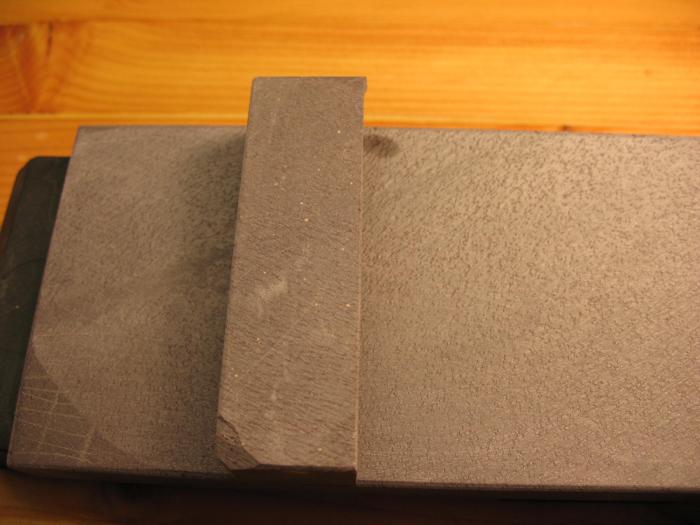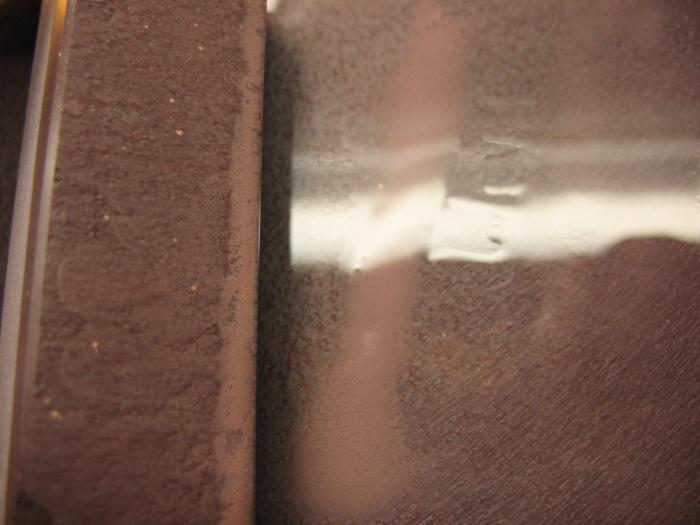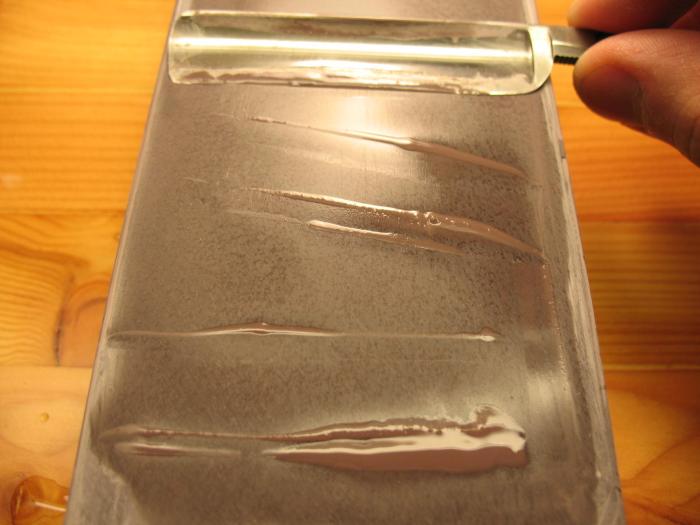Results 1 to 10 of 10
Thread: Help with coticule!
-
08-14-2008, 09:16 PM #1
 Help with coticule!
Help with coticule!
So I've been reading the forums for some time now and the one thing that still confuses me is the coticule. I've been inclined just to avoid them altogether for that simple reason, settling for a Norton 4k/8k and Chinese 12k. However, I happened to get one as a bonus with a couple of Torreys I found on ebay, so know I have to try it. I've searched quite a bit on coticules but had a few specific questions:
Ardennes Coticule says the backside is useless black shist, but I've also heard of a combo coticule, how do you tell one from another? Here's a picture of mine if that will help. I hope it posts, first time with a pic
I don't have small coticule for slurrying, can I use any stone as long as it's a coarser grit like a Norton lapping stone?
Finally, which one is a better finishing hone, Chinese 12k or Belgian coticule...this could get interesting
Thanks,
Robert
-
08-14-2008, 09:28 PM #2

It's a bit hard to tell from your picture without seeing a closeup of the underside, but given the uneven wavy appearance of the yellow coticule layer to your mystery layer, I'll wager that you have a natural Coticule and Belgian Blue stone.
The easiest way to tell is to lap the mystery side with some water and look at the color of the slurry. The Belgian Blue has an unmistakable purple color (it's not blue, it's purple). The slate doesn't even come close to the purple color. Here are some pics of the Belgian Blue and the color of the slurry:



You can raise a slurry on a stone using a coarser stone, diamond plate, wet/dry sandpaper, but don't use something that has potential of releasing grit coarser than the stone you're using.
I hope this helps. It looks like you have a nice natural coticule combo there. Congrats, they're great stones.
Oh, and if you have an older vintage stone (which you probably do), don't expect to see results right off the bat. You may have to lap off the crud, age and time off that surface before you get to an accurate streak of slurry.
Chris L"Blues fallin' down like hail." Robert Johnson
"Aw, Pretty Boy, can't you show me nuthin but surrender?" Patti Smith
-
The Following User Says Thank You to ChrisL For This Useful Post:
rshaw (08-14-2008)
-
08-14-2008, 10:03 PM #3

IF you can post a photo of the side of the stone where the two colors meet that would also help. Heck of a bonus you got there.
 Be careful how you treat people on your way up, you may meet them again on your way back down.
Be careful how you treat people on your way up, you may meet them again on your way back down.
-
08-14-2008, 10:15 PM #4

I'll try to kill two birds with one stone. Hopefully you can get a good look at the blue side and the seam between the two sides.
-
08-14-2008, 10:23 PM #5Senior Member

- Join Date
- Oct 2007
- Posts
- 1,292
Thanked: 150
Yeah, it looks like a natural combo to me, too.
Nice score!
-
08-14-2008, 10:25 PM #6

It does look like a natural. If it were slate the line between the two would be straight.
Be careful how you treat people on your way up, you may meet them again on your way back down.
-
08-14-2008, 10:32 PM #7
 belgian
belgian
back side of the second stone is belgian blue but your stone back sde doesn't look like belgian blue at least from picture.Belgian stones are natural stones and they differ so much 1 from another one confuse a lot people.the best test is put razor on it and try t put final edge 20-30 laps then check it out 100x microscope .see how your edge looks like.if that edge is straight line then you have good stone .edge looks like saw tooth then sorry you got ....hope this help
-
08-14-2008, 10:37 PM #8

Now that we've established the backside is a Belgian blue, what is the difference between the yellow and blue sides when it comes to putting an edge on a razor?
-
08-14-2008, 10:41 PM #9

Blue is very slow and more course, yellow should cut faster and finer.
It is easier to fool people than to convince them they have been fooled. Twain
-
08-14-2008, 10:51 PM #10Senior Member

- Join Date
- Oct 2007
- Posts
- 1,292
Thanked: 150
The general rule of thumb is that the blue is similar to a 6k hone and that the yellow is more like 8k to 10k.
But the major characteristics of the Coticule are that it cuts relatively quickly and leaves a very nicely polished edge (natural stones are hard to classify with actual grit number). You should be able to strop the razor about 100 passes on leather after honing on the Coticule and have a great shaving edge.
-
The Following User Says Thank You to Russel Baldridge For This Useful Post:
rshaw (08-14-2008)


 LinkBack URL
LinkBack URL About LinkBacks
About LinkBacks






 Reply With Quote
Reply With Quote


